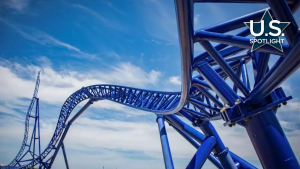With millions left without power in Florida in the wake of back-to-back hurricanes Helene and Milton, Texans wonder if their electrical grid is ready for future storms. The state should not feel complacent. It is that through 2022, only Florida has seen more hurricanes than the Lone Star State.
While August through October is generally considered peak hurricane season, the official Texas hurricane season runs from June 1 to Nov. 30, mirroring the rest of the United States. That means Texas can’t afford to rest while neighboring states suffer from storms.
Houston-based CenterPoint Energy was specifically cited for its lack of preparation when Hurricane Beryl hit Texas in July 2024. Even before Beryl, CenterPoint was ranked as one of the worst power utilities in the country in terms of delivering power quality to consumers, according to the , and the worst over the past five years in terms of power outages.
In Beryl’s aftermath, the company was severely criticized for its response. Nearly 2.3 million of their customers lost power for up to two weeks, in the heart of the summer heat.
Although nearly 12,000 workers were brought in, even from outside the region, to help with restoration efforts, not all were called in at once.
Perhaps the single greatest post-Beryl problem faced by CenterPoint was the number of powerlines damaged by fallen trees during the storm. The company was also criticized for poor communications concerning power restoration.Â
At the request of Gov. Greg Abbott, the Public Utility Commission of Texas (PUC) launched an investigation into the company’s response processes. A full report of findings and recommendations is expected by Dec. 1 this year.
CenterPoint has already responded in several ways. Along with the termination of the company’s senior vice president of electric business, other managerial changes have been promised. The company has also contracted with suppliers, one from Spain and one from Australia, to monitor weather hazards and accelerate future restoration efforts.
However, what everyone wants to see are physical changes to the CenterPoint grid that would minimize potential damage from future hurricanes.
Texas has a somewhat unique electrical grid system wherein utilities have their own designated jurisdictions regulated by the PUC. Commissioners are appointed by Gov. Abbott. Infrastructure projects or rate increases proposed by the utilities must be approved by the PUC.
Like other state utilities, CenterPoint has recognized the need to completely rebuild rather than repair their electric delivery systems. Since downed poles caused by Beryl were so prevalent, by the end of August CenterPoint had replaced 1,100 damaged wooden poles mostly with stronger composite poles. Vegetation was cleared from about 3,200 kilometers of powerlines.
More replacement and maintenance has been promised by June 2025.
Another 25,000 poles, many able to withstand winds up to 212 km/h, and 5,000 automated reliability devices will be installed. Another 6,400 kilometers of vegetation will be cleared. More powerlines will also be buried underground based on pending risk assessments, increasing the current rate of 46 per cent of buried lines across CenterPoint’s system.
“We are very much taking the feedback to heart of how we showed up and then how we needed to improve, and we’re working every day to make sure that is the case,” Keith Stephens, ĚýłŮ´Ç±ô»ĺ .
The company it has a 10-year capital plan for its electric business that includes “nearly $27 billion in customer-driven investments to grow, modernize and harden our existing infrastructure to support a more reliable and resilient energy delivery system.”
Of that, $5 billion has been , with the rest spread over the company’s power utilities in five other states.
In its plan submitted to Texas regulators in April 2024 prior to Beryl, CenterPoint had suggested the state and federal governments join it to cover some of the estimated $2.2 billion cost of strengthening poles and powerlines against storm damage. However, energy experts told at the time this would only cover a fraction of what would be needed. It turns out they were correct.
The focus in Texas had turned to power generation after . However, Beryl highlighted weaknesses in the state’s electrical distribution infrastructure. After all, power generation doesn’t benefit customers if it can’t reach homes and businesses.
At the moment, Texas has been on the edge of the devastating storms that have been recently hurtling toward the Gulf Coast of Florida and the southeast U.S. coast. With several weeks left in the official hurricane season, it is hoped that resiliency efforts made to date will be sufficient.










Recent Comments
comments for this post are closed